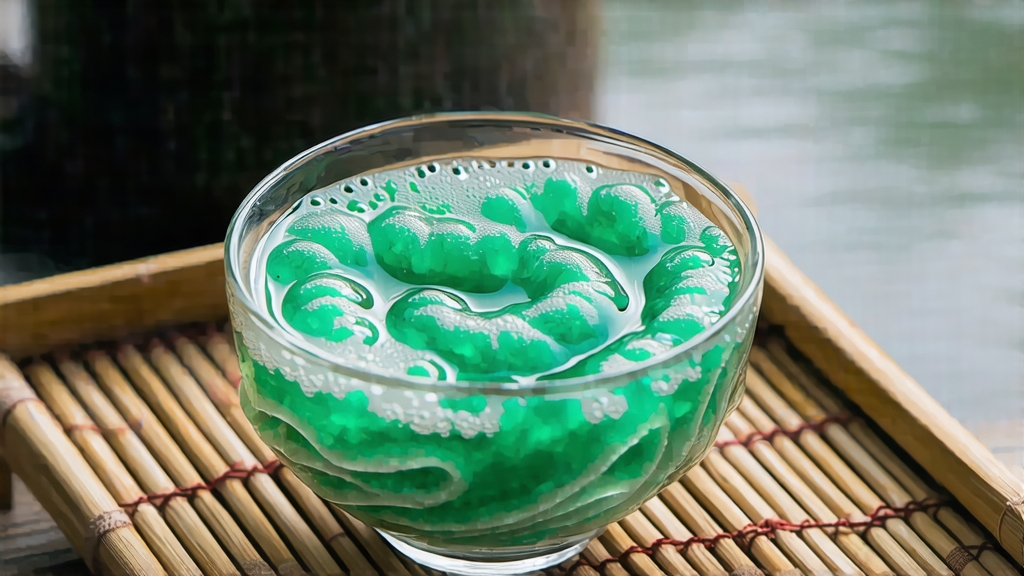
Biluochun, whose name translates literally to “Green Snail Spring,” is one of China’s ten most celebrated teas, yet it remains a quiet revelation for many overseas drinkers. Grown in a microclimate where the Taihu Lake’s mist meets citrus-scented orchards, this emerald-green tea offers a sensory bridge between classical Chinese aesthetics and contemporary gastronomy. To understand Biluochun is to witness how geography, history, and human ingenuity can be infused into a single sip.
Historical whispers place the tea’s birth during the late Tang dynasty, but verifiable records begin in the Ming era, when it was known by the humbler moniker “Xia Sha Ren Xiang”—“Scary Fragrance”—because its aroma was so arresting that tea pickers feared it was supernatural. The Kangxi Emperor, touring the Jiangnan region in 1699, rechristened it Biluochun after the snail-shell shape of the finished leaf and its spring harvest window. Court annals note that the imperial caravan carried the tea north in lead-lined chests so that the monarch could relive the taste of southern mist while encamped on the Mongolian steppe. From that moment, Biluochun became a tribute tea, shipped along the Grand Canal and later smuggled abroad by European missionaries who equated its perfume to “green jasmine from the East.”
The tea belongs to the green tea family, meaning the leaves are fixed early to halt oxidation, preserving chlorophyll and locking in a grassy brilliance. Yet within this category Biluochun is an outlier: it is the only famous Chinese green tea whose terroir intercrops tea bushes with fruit trees—peach, plum, apricot, and loquat. When spring warmth coaxes simultaneous bloom, petals fall onto tender tea buds, lending a whisper of nectar that survives the firing process. The result is a liquor that carries not merely vegetal notes but a complex bouquet reminiscent of lychee, ripe pear, and white peach skin.
Two sub-regions contend for authenticity: Dongting East Mountain and Dongting West Mountain, both limestone outcrops rising from Taihu’s shallows. East Mountain, with its south-facing terraces and granite sub-soil, yields a slightly sweeter cup, whereas West Mountain, cooler and stonier, produces a more mineral-driven infusion. Purists debate the superiority of either, but connoisseurs agree that only leaves picked before the Qingming festival—when each bud is still a tight pearl containing the winter’s stored sugars—deserve the name “Premium Biluochun.” After Qingming, the same bushes offer perfectly pleasant tea, yet the luminous tension of early spring dissipates like morning mist.
Harvest begins at dawn, when lake fog is thickest, because moisture keeps buds pliant and prevents premature bruising. Pickers, usually women wearing bamboo conical hats, work with thumb and index finger in a rapid scissoring motion, dropping two leaves and a bud into wicker baskets lined with fresh orchard petals. Speed matters: the interval between plucking and fixation must not exceed four hours if enzymatic browning is to be avoided. Upon reaching the village workshop, the leaves are spread on hemp cloth for a brief withering—no more than thirty minutes—just enough to evaporate surface water and concentrate aromatics.
The most iconic phase is pan-firing, performed on woks heated to 180 °C. A master craftsman, often a third-generation artisan, tosses 250 grams of leaves with bare hands, relying on calloused skin to gauge temperature. The motion is a figure-eight: clockwise to press the bud against the iron, counter-clockwise to lift and aerate. After three minutes the temperature is dropped to 120 °C, and the process repeats for another twenty, during which the leaf slowly spirals into the signature snail shape while internal moisture drops to 7 percent. Unlike Longjing’s flat pressing or Taiping Houkui’s elaborate stretching, Biluochun’s curling is achieved purely through wrist torque and thermal shock, making it one of the most kinetic spectacles in Chinese tea craft.
Once cooled, the semi-dry curls are given a final low-temperature bake at 60 °C for forty minutes, a step known as “ti xiang,” or lifting the fragrance. Here the fruit-tree nuance is sealed in; chemists attribute the effect to trace concentrations of geraniol and linalool, terpenes shared by both tea leaves and surrounding blossoms. Finished tea is then sorted by hand on bamboo trays under full-spectrum lamps. Only curls that are uniformly